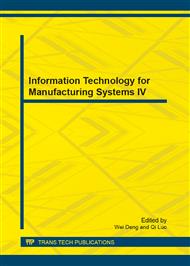p.844
p.850
p.857
p.864
p.872
p.878
p.883
p.889
p.894
Interaction between FDI and Agglomeration of Capital-Intensive Manufacturing Industry Using System Dynamics Modeling and Simulation
Abstract:
The interaction between foreign direct investment (FDI) and agglomeration of capital-intensive manufacturers is studied using a system dynamics model and simulation. Data of manufacturers in three industries in the Yangtze Delta region from 1996 to 2010 are analyzed. Interactions between FDI and agglomeration are analyzed through the lifecycle of the industry cluster. Simulation results show that the interaction relationship changes over the entire lifecycle of the industry cluster. Mutual promotion is typical in the early stage during which the inflow of FDI contributes to industrial agglomeration and industrial agglomeration attracts FDI into the region. This mutual promotion diminishes in the expansion stage, disappears in the maturity stage, but appears again in the decline stage.
Info:
Periodical:
Pages:
872-877
Citation:
Online since:
September 2013
Authors:
Price:
Сopyright:
© 2013 Trans Tech Publications Ltd. All Rights Reserved
Share:
Citation:


